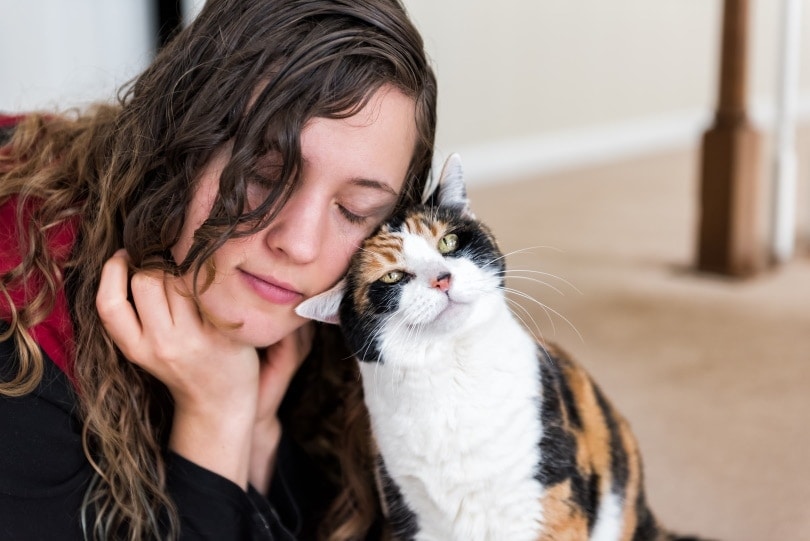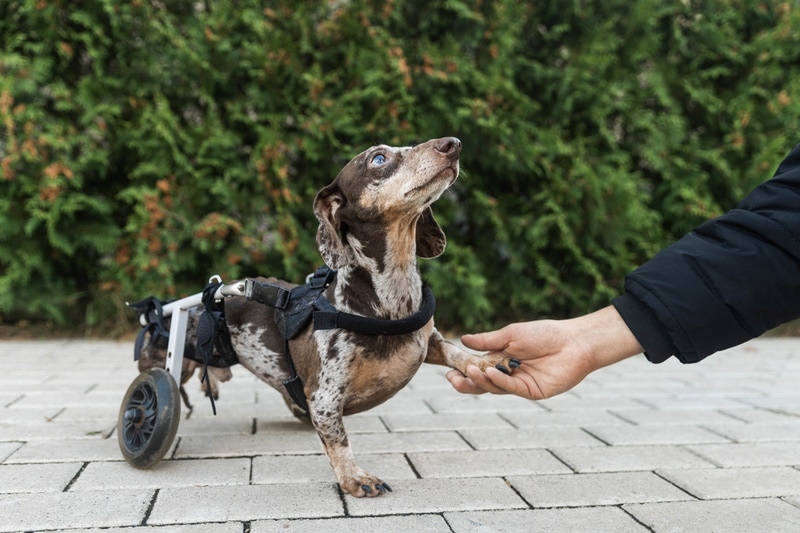Do I Need an Emotional Support Cat Vest? Vet Approved Facts & Traveling Tips
Updated on

Click to Skip Ahead
Pets have been used as emotional support animals (ESAs) for centuries, providing valuable companionship and moral support in tough situations. You may have seen other ESAs wearing flashy vests and wondered if your emotional support cat needs one, but it’s strictly optional. There’s no law that says your cat needs a vest to identify them, but certain airlines or transportation services may require one for identification purposes.
With that said, clearly labeled emotional support cat vests are a good idea to let the public know that your cat does an essential job in helping your mental and emotional well-being. They may simply declare your cat as an ESA, or have additional precautions like “Do Not Touch,” coming in a wide variety of styles and colors to fit all kitty fashions.
If you’re interested in learning more about how emotional support animals work or how they’re different from service animals, you’re in luck! Join us below as we delve into those topics and more.
What Is an Emotional Support Animal?
Emotional support animals are pets prescribed by mental health professionals to treat symptoms of mental illness, such as anxiety, depression, PTSD, or certain crippling phobias, like agoraphobia. Qualified mental health professionals like psychiatrists, psychologists, or therapists will evaluate the severity of your illness and symptoms and assess whether an emotional support animal like a cat would mitigate them and make life more manageable.
Despite being prescribed alongside medications, emotional support animals do not receive any specialized training and primarily help through their comforting presence.

Emotional Support Animal vs. Service Animal: What’s the Difference?
Emotional support animals aren’t working animals in the same way a service animal is, and they don’t receive training to aid disabled people with certain tasks. Rather, ESAs help by just being near you and working alongside other treatments, like medication or therapy, to ease emotional distress. ESAs don’t enjoy the breadth of special legal privileges that service animals do and don’t constitute an exception to most no-pet policies—with a few exceptions.
Qualified service animals are a whole different story, and cats can’t qualify for service animals.They go through rigorous training, health evaluations, and assessments to perform specific tasks. For example, one dog may be trained to identify seizures, while another is trained to help guide the visually impaired. Service animals, more importantly, enjoy broader legal status than ESAs and are allowed nearly anywhere with their disabled handlers, even places that normally don’t allow pets.
Is an Emotional Support Animal Like a Psychiatric Service Animal?
It’s easy to confuse an ESA for a psychiatric service animal because they both help people with mental health problems. However, psychiatric service dogs are a type of service animal, and they are trained to help people with mental illness and learning disabilities to function in their everyday life. Psychiatric service dogs can perform tasks, such as retrieving medications, tactile stimulation, or reorienting their handler into a calmer state during an anxiety attack.
Emotional support animals have no structured training at all to speak of, save any training given by their owner or previous owners.
Image Credit: evrymmnt, Shutterstock
Are Emotional Support Cats Allowed on Airplanes?
The U.S. Department of Transportation’s revised Air Carrier Access Act, or ACAA, does not consider ESAs to be service animals anymore. The only animals federally recognized to unilaterally enter airplanes with their handlers are qualified and trained service animals needed to perform specific tasks to aid their handler.
There’s a pretty big catch, though. DOT’s most recent revisions added some leeway for ESA owners by allowing airliners to individually decide whether they want to allow ESAs on their planes or to treat them as regular pets. They’re allowed to set guidelines as they wish, typically including that your ESA doesn’t take up a seat on their own or disturb other passengers. Finally, many airlines that do allow ESAs on board require your pet to have a clearly labeled vest marking them as an ESA.
Tips for Traveling With an Emotional Support Cat
If your emotional support cat is newly vested up and ready to travel the world (or just the country) with you, you might be a little antsy. That’s perfectly natural! Travel can be scary, especially with your best furry friend at your side. To make things easier on your upcoming trip, make use of our essential ESA traveling tips below.
- Call ahead to your airline and hotel to ensure your accommodations are ESA-friendly and to clarify any rules you’ll need to follow.
- If you haven’t already, purchase an ESA vest to clearly identify your cat and reduce unexpected hassles during your trip.
- Bring a fully stocked pet travel kit. Pack plenty of treats, a collar, a leash, a supply of food, medical documentation, and other daily-use items for your cat.
- Before taking a big trip with your cat, take them on shorter test runs nearby so you can gauge their reaction to new places. Some cats need gradual exposure before traveling far from home.
- Consult with your vet well in advance to understand the requirements for traveling. Your cat will need their vaccines to be up to date, including a rabies vaccine and a health certificate, and you’ll need an adequate carrier.
Conclusion
Your emotional support cat doesn’t legally need a vest, but it’s a good idea to get one if you intend to travel. Emotional support cats are like a furry life raft for people suffering from phobias or anxiety, but they’re not quite as legally protected as service animals are because they don’t perform specific disability-related tasks.
Featured Image Credit: Frau aus UA, Shutterstock














